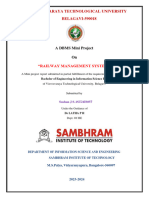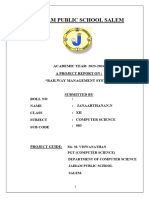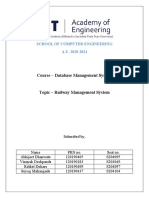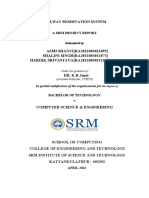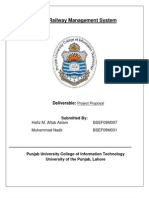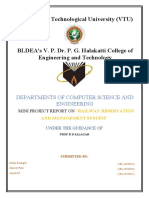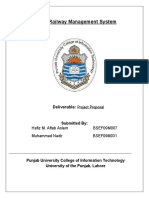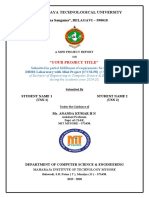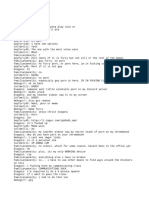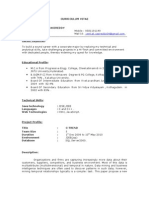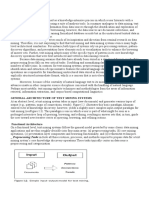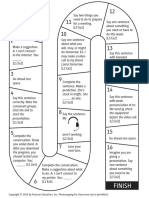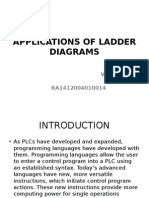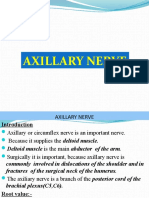0% found this document useful (0 votes)
18 views32 pagesDBMS Mini Project Report (1) - 1
The Railway Database Management System (RDBMS) is a project aimed at automating and managing railway-related data, including train schedules, ticket bookings, and passenger information, using a relational database model. It addresses issues of manual record-keeping and data redundancy, ensuring data accuracy and efficient retrieval through SQL queries. The project serves as a foundation for future developments in ticket reservation systems and highlights the importance of organized data management in transportation networks.
Uploaded by
Karna ShaivaCopyright
© © All Rights Reserved
We take content rights seriously. If you suspect this is your content, claim it here.
Available Formats
Download as PDF, TXT or read online on Scribd
0% found this document useful (0 votes)
18 views32 pagesDBMS Mini Project Report (1) - 1
The Railway Database Management System (RDBMS) is a project aimed at automating and managing railway-related data, including train schedules, ticket bookings, and passenger information, using a relational database model. It addresses issues of manual record-keeping and data redundancy, ensuring data accuracy and efficient retrieval through SQL queries. The project serves as a foundation for future developments in ticket reservation systems and highlights the importance of organized data management in transportation networks.
Uploaded by
Karna ShaivaCopyright
© © All Rights Reserved
We take content rights seriously. If you suspect this is your content, claim it here.
Available Formats
Download as PDF, TXT or read online on Scribd
/ 32


